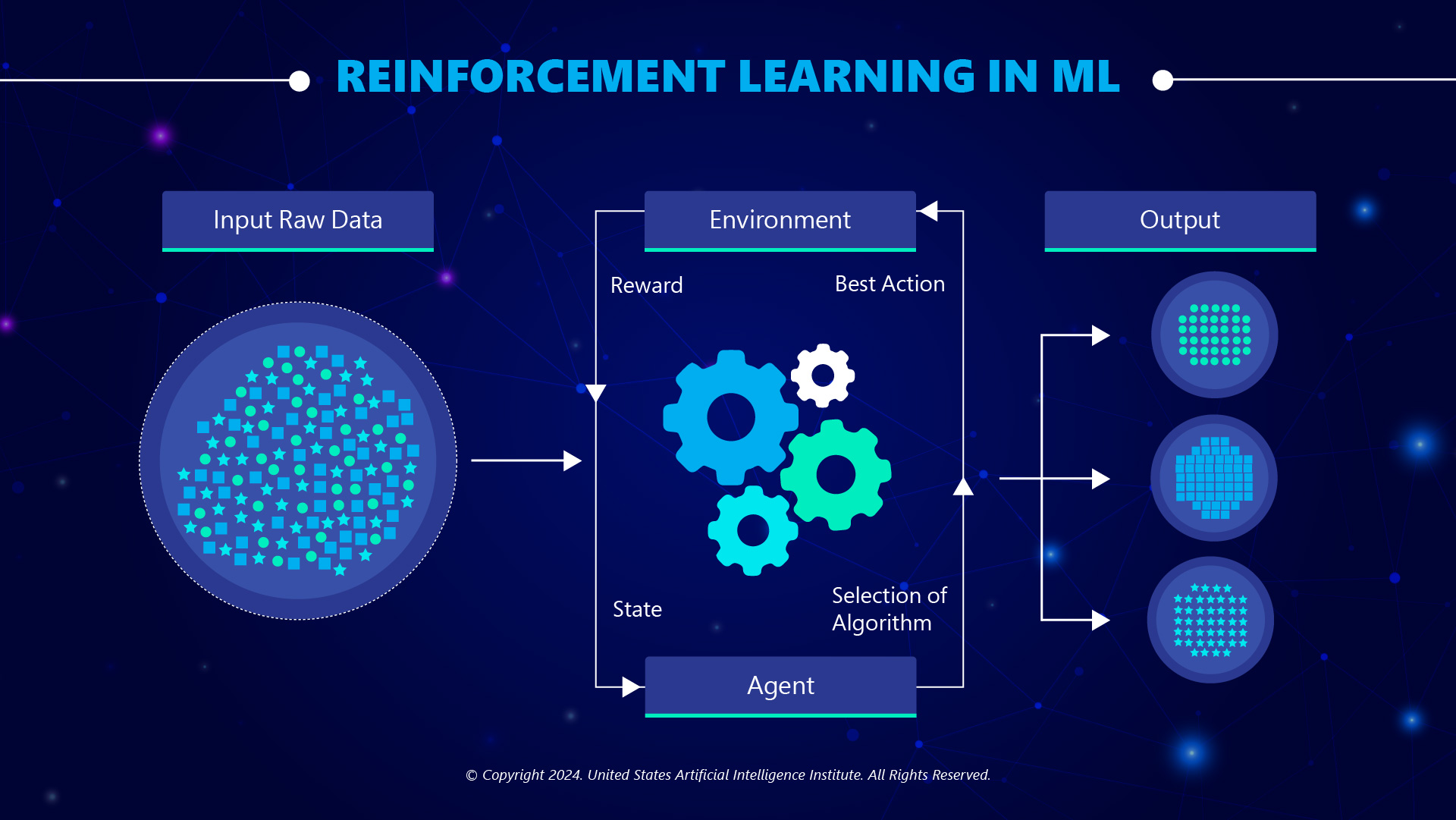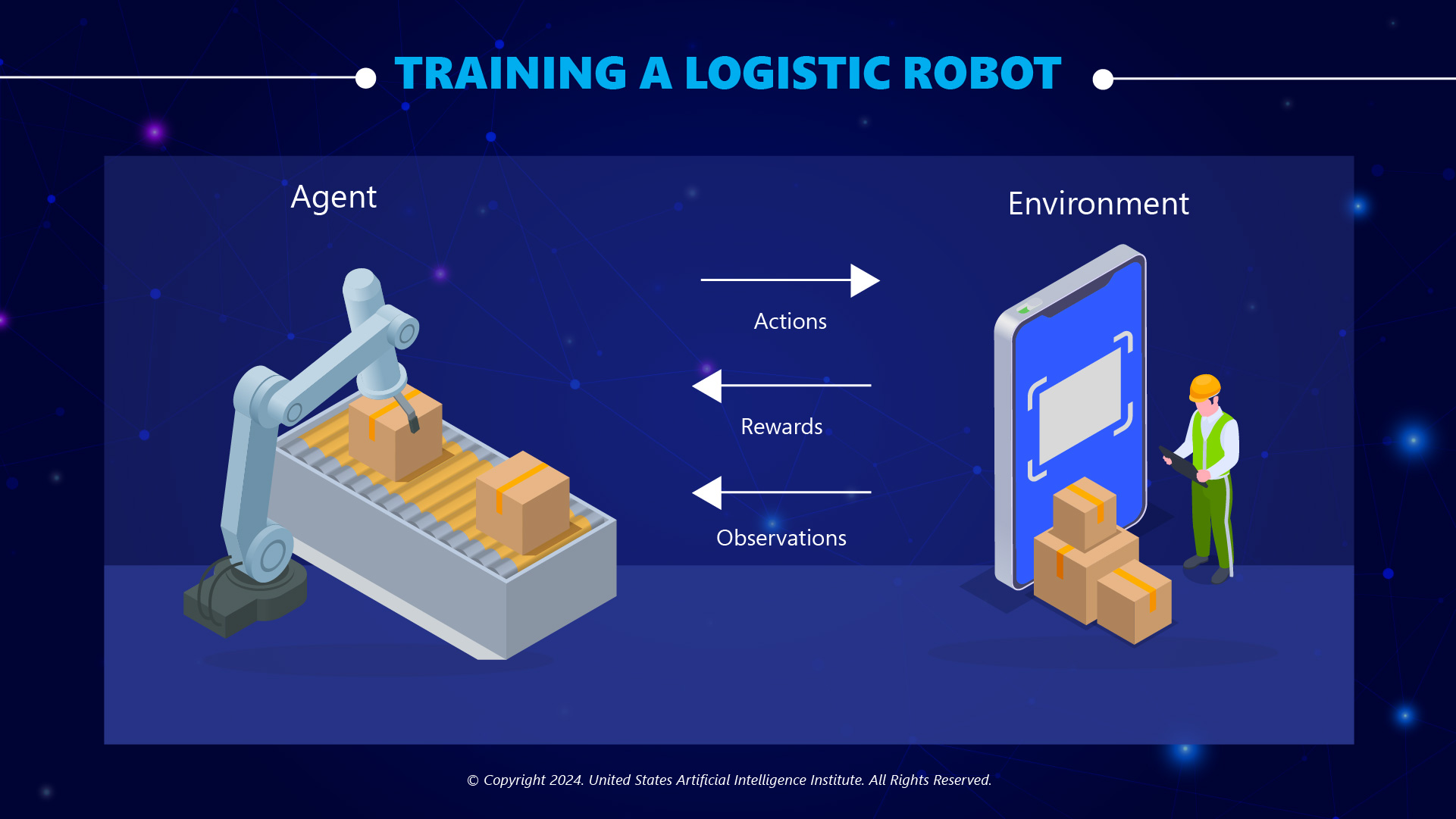
Reinforcement learning is a rapidly evolving field of artificial intelligence (AI). It has been inspired by the way humans and animals learn in real life through trial-and-error methods. In supervised learning, models are trained on labeled data; in unsupervised learning, training is done on unlabeled data. However, in reinforcement learning, the RL agents learn by interacting with their environment and receiving continuous feedback, usually in the form of rewards. This loop of feedback is then used to refine their decision-making strategies and make the right decision.
Whether you are an expert AI professional or a student looking to get started with your AI career, knowledge of reinforcement learning is highly essential. In this comprehensive guide, let us learn more about this incredible field of AI.
Why is Reinforcement Learning Important?
It is a type of machine learning where its ability to learn from experience without explicitly programming makes it highly versatile. As per a report by McKinsey in 2023, the global AI market is expected to reach $1.5 trillion by 2030 and reinforcement learning will have a significant role to play in various sectors. Let’s acknowledge some specific reasons why it’s important.
Firstly, it is an excellent technology for environments that are complex and dynamic and have incomplete information. Say for example, while training robots to navigate warehouses or maybe autonomous cars, machine learning algorithms will benefit a lot through reinforcement learning’s ability to adapt to changing situations.
Then, in games like Chess or Go, where the number of possible states is huge, supervised learning becomes kind of impractical. So, RL helps AI engineers and professionals to learn through exploration and exploitation. Thus, RL becomes a perfect algorithm for complex game-playing AI.
Finally, when it comes to real-world applications, reinforcement learning is used across various industries, right from recommendation systems that can personalize content to stock trading algorithms, and more.
Components of Reinforcement Learning
Now, let us look at some of the key components that make up functioning reinforcement learning properly.

Popular Reinforcement Learning Algorithms
Reinforcement learning consists of several machine learning algorithms with each having its own strengths and weaknesses. Following are some of the most popular reinforcement learning:
Q- Learning
It is a value-based method where agents learn the value also known as the Q-value of taking a particular action in a given state. It also represents the expected future reward for taking that action.
Deep Q-Networks (DQN)
It combines the Q-learning with deep learning techniques and helps the agents handle complex state representations. DQNs have achieved huge success in games like Atari and Go.
Policy Gradient Methods
These are the methods that directly optimize the policy function of the agent and focus on actions that can lead to higher rewards.
Real-World Applications of Reinforcement Learning
The uses of reinforcement learning are huge and growing continuously. Some widely used reinforcement learning applications are:

Challenges in Reinforcement learning
Though reinforcement learning is widely used for various applications and excels in several fields, there are some challenges that need consideration such as:
For a career in AI, reinforcement learning is among the most important concepts to master. Enrolling in top AI courses or artificial intelligence certification programs can help you learn the underlying concepts of reinforcement learning in detail and help you advance in this career path.
Conclusion
Overall, reinforcement learning is a powerful tool used to train agents so that they can make intelligent decisions in real-time within complex environments. As the domain expands and evolves, we can expect reinforcement learning to become even more dynamic playing a greater role in transforming industries, improving our lives, automation, and game design. So, strengthen your understanding of the core concepts of reinforcement learning and join this exciting world to contribute to its future advancements.
Follow us: